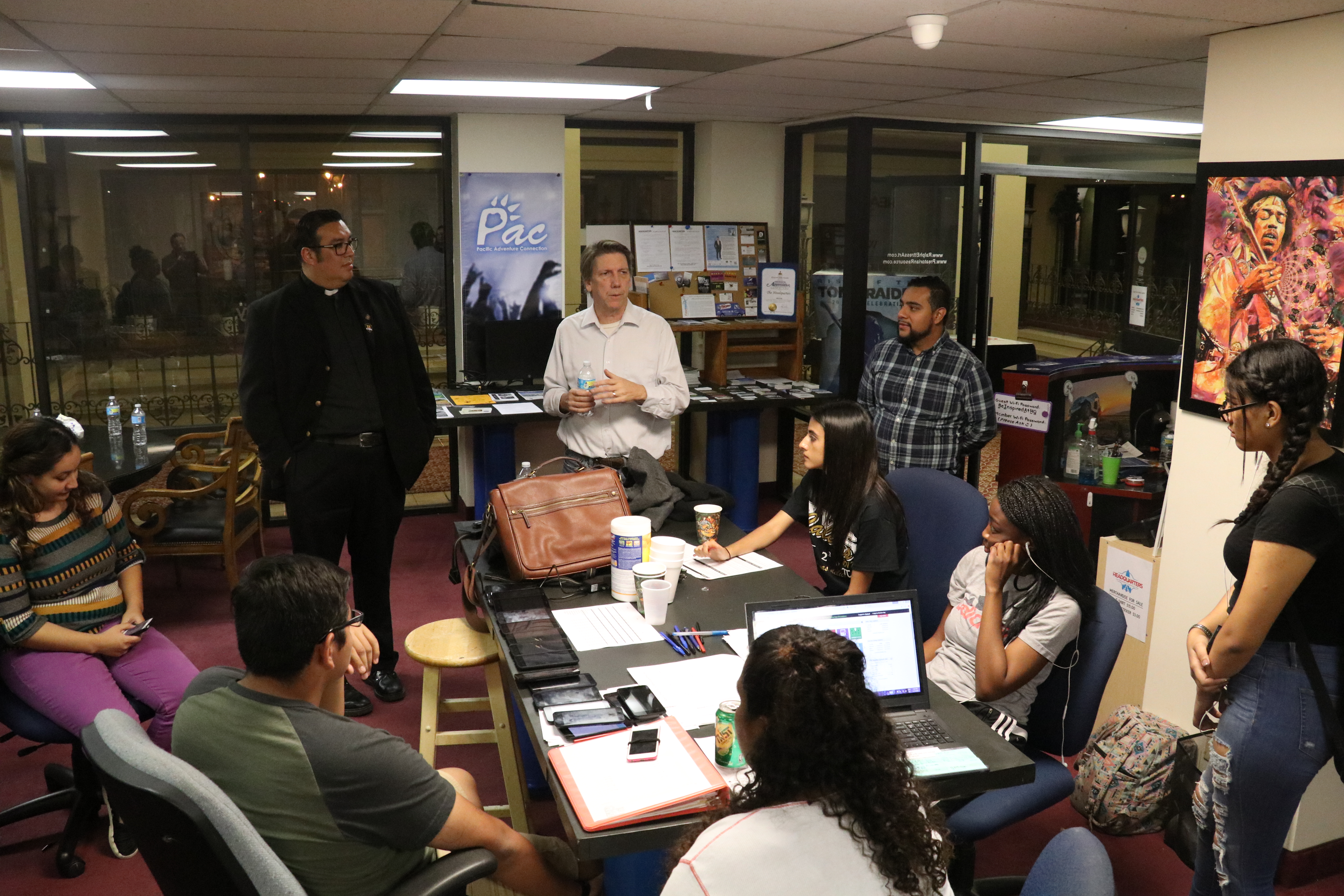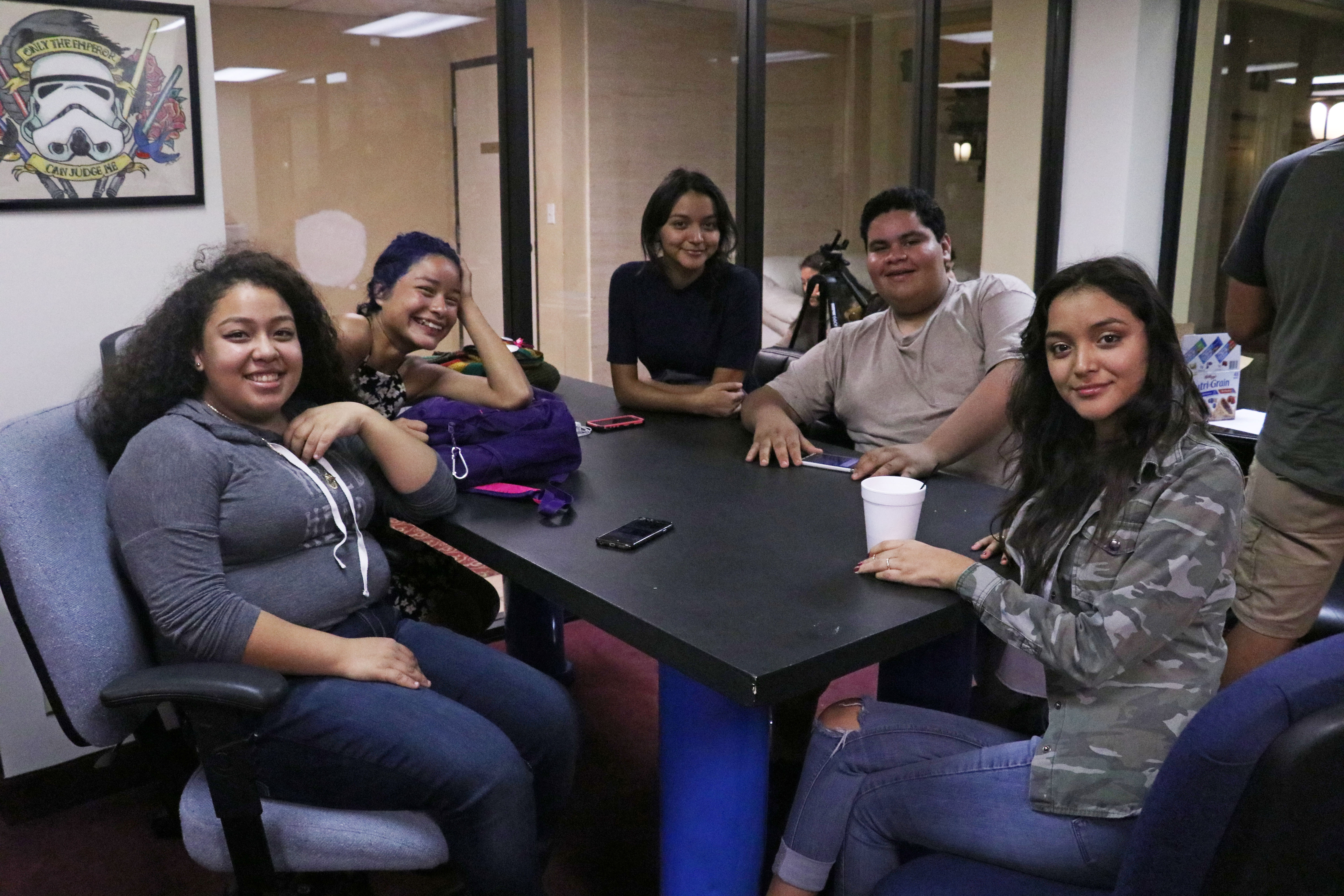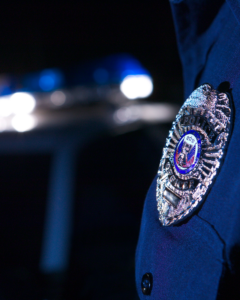Groups striving to impact disenfranchised voters
4 min read
Photo/ Anthony Victoria: Inland Congregations United for Change Executive Director Tom Dolan, center, speaking to phone bankers at the Headquarters Co-Working space on November 7.
The transformation of Inland politics will come down to the mobilization of historically disenfranchised voters, according to nonpartisan grassroots and nonprofit leaders that worked to increase voter participation in this year’s election.
Groups such as the Inland Congregations United for Change, the Center for Community Action and Environmental Justice, and the California Partnership formed a coalition to address low voter turnout in the area.
Known as Inland Empowerment, volunteers–mainly adolescent youth and young adults–made phone calls and canvassed neighborhoods to reach a demographic they say struggles to have a voice in politics.
“Overtime it’s become clear that regardless of the issues [organizations] are working on, the revolving issue is the imbalance of power,” explained Inland Empowerment spokesperson Deborah Phares. “If we want to create the kind of change we want to see, we have to get at that imbalance of power.”
The imbalance of power Phares mentioned implies that issues dealing with education, mass incarceration, health, and public safety seldomly benefit working class communities.
San Bernardino County’s Community Indicators Report from last year reported that 16 percent of families live in poverty, about 5,000 juveniles were arrested in 2013, 54 percent of adults ages 18-64 lack health insurance coverage (Latinos were the highest group to be uninsured at 25 percent), and nearly three quarter of adults are overweight (Four out of 10 students in San Bernardino County schools are considered overweight or obese).

Phares believes the key to mobilizing disenfranchised voters is to help them believe that they are part of the decision making process.
“This is the beginning of building a movement,” Phares said. “We’re inviting residents to become voters and participate as voters. We believe that they matter.”
Cesar Gomez, a community organizer with California Partnership, believes the collaboration with the different organizations
“We’ve all worked at different capacities on different stuff, but not as a united force,” he said. “Now this united force will be able to come in contact with folks that perhaps have never been reached before. These are minorities, first time voters, and nonvoters are our priorities.”
ICUC reaches over 35,000 voters in GOTV effort
Inland Congregations United for Change organizers hosted a party at the Headquarters Co-Working Space in Downtown San Bernardino on Election Night to commemorate their efforts in reaching out to thousands of voters.
“This election, our volunteers focused on talking to voters who are often ignored,” said ICUC executive director, Tom Dolan. “Because of this strategy, our members gained support for propositions that will support public education, juvenile justice reform and health care for vulnerable families in the state.”

About 35,000 people were reached in the get-out-the-vote effort, according to Dolan. “Absent our strategy of engaging voters who political parties and candidates typically ignore, and our commitment to mobilize people of faith, this election cycle would have been markedly different,” he said.
Among the people who walked through neighborhoods and made phone calls to engage with voters were high school and college students, as well as formerly incarcerated residents.
Arroyo Valley High School student Angela Saldana, 16, believes student involvement in election efforts has encouraged her to be more civically engaged and critical of politics.
“This shows that the youth voice matters,” said Saldana. “Even though we can’t vote, these residents are choosing to vote for things that affect us now and that will affect us years from now. We have to be informed and involved.”
Voters weigh in on historic presidential election
Inland voters on Tuesday went to the polls to cast their presidential, federal, state, and local election choices after months of deliberation.
As they left their designated polling locations, voters expressed their thoughts and opinions of an election season that dealt with contentious issues, such as immigration, gun control, abortion, environmental pollution, and police brutality.
After months of hearing vitriolic attacks from Republican candidate Donald Trump and Democratic candidate Hillary Clinton directed towards each other, Donna Ferrell, 53, of San Bernardino chose to vote for the Clinton because of her policy experience.
“She’s proved that she could be a good leader,” Ferrell said.

Despite her choice, Ferrell did admit that she was conflicted due to Clinton’s controversy with her email server and foreign policy mishaps.
“This has been the most mind changing experience for me as a voter,” said Ferrell. “It required a lot of critical thinking and decision making for the first time.”
James Conrad, 31, of Riverside said he refused to vote for neither Clinton or Trump.
“I don’t like Trump, but I like Hillary a lot less,” he said. “She scares me. I think this election has proven that neither party is efficient enough to run this country. We need better options.”



